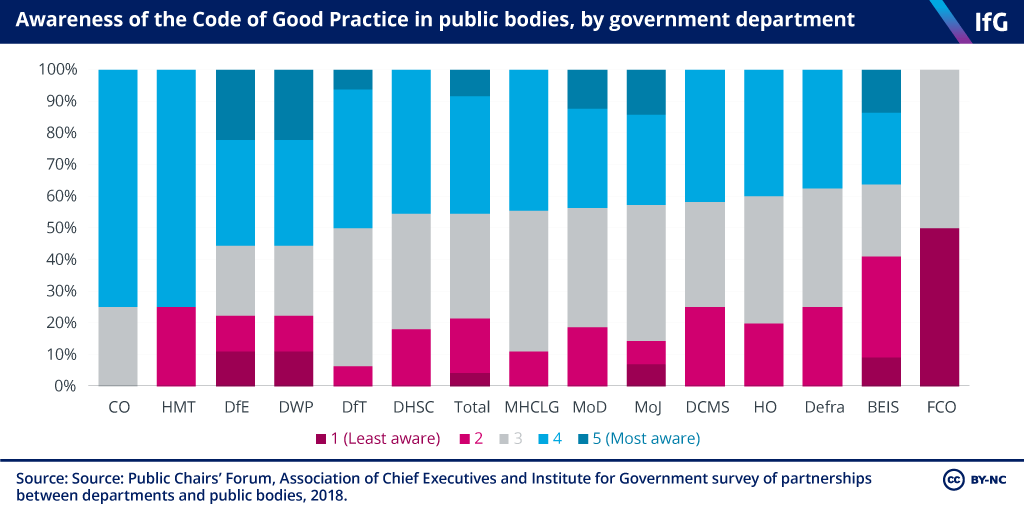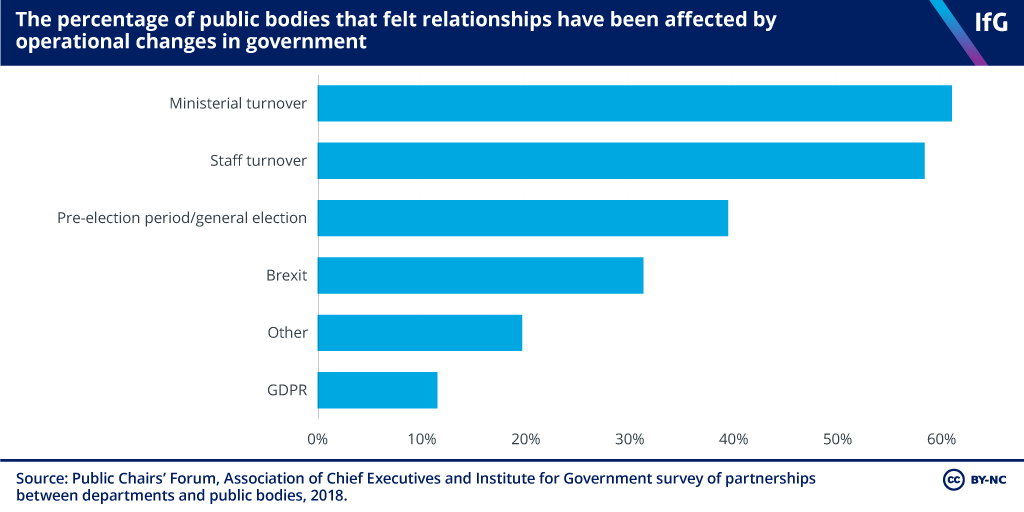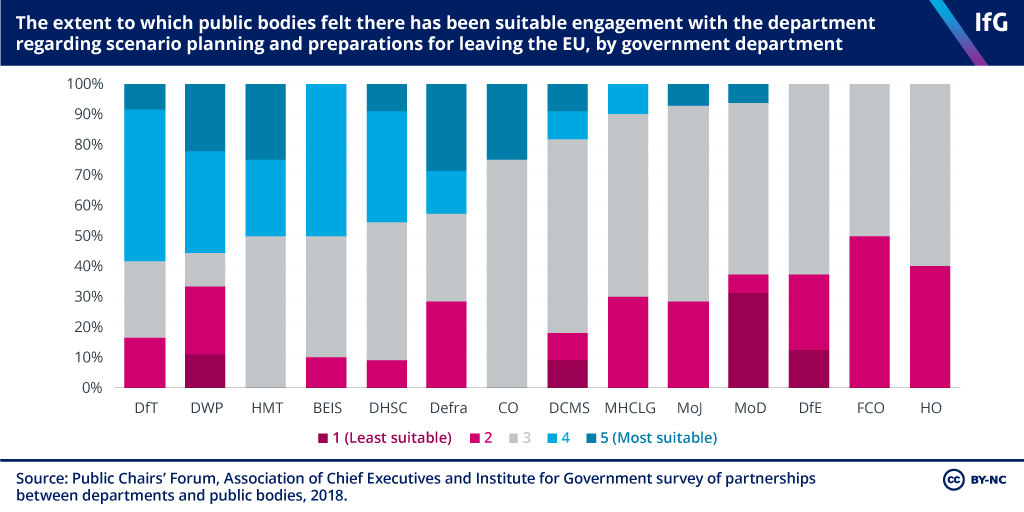Public bodies and departments’ Code of Good Practice could help – if they were aware of it
The Cabinet Office's blueprint for joint working cannot have impact if leaders of public bodies don’t know about it.
New research shows that many government departments and the public bodies they oversee are not working efficiently together. Susanna Smith says the Cabinet Office's blueprint for joint working cannot have impact if leaders of public bodies don’t know about it.
There are over 300 public bodies in the UK. Their size, scale and functions vary enormously, from powerful regulators to grant distributors, from watchdogs over government to service providers. They perform important public functions. How central government works with those organisations is crucial to their ability to exercise those functions effectively.
The Cabinet Office’s Code of Good Practice, first published in February 2017, is supposed to set the direction for how departments and public bodies can work effectively together. It sets principles and standards to underpin the relationships. The use of terms like ‘partnerships’, ‘trust’, ‘honest’ and ‘constructive’ show how the Government’s tone has shifted since the post-2010 ‘bonfire of the quangos.’ But our research on the way the Code has operated since its launch shows there needs to be considerably more effort across Whitehall to make it impactful.
Many public bodies are not even aware of the Code of Good Practice
The Code should help set the right balance between three elements: oversight – proportionate to the size, function and level of risk in the organisation – the sharing of skills and expertise, and appropriate levels of autonomy for each public body.
But too few leaders of public bodies know about it. Our survey of chairs and chief executives of public bodies reveals a lack of awareness of the Code within their organisation or the department they work with. On a scale of 1–5 (5 being the most aware) 63% of respondents from 129 public bodies rated awareness of the Code between 1–3.

Partnerships are damaged by inefficient processes, and ministerial and official churn
Laborious government processes are generating a culture of negativity between public bodies and departments. Our research found that public body leaders feel that the inefficiency of the public appointments process, central government spending controls, duplicate requests for information and high levels of turnover at ministerial and civil service level all hinder productive partnerships.
Changes in minister can lead to changes in departmental priorities, and high turnover makes it more difficult for public bodies to forward plan to maximise their resources. For example, there have been six Justice Secretaries since 2010, which will have affected a number of public bodies, such as the Parole Board and Legal Services Board.

Leaders of public bodies frequently mentioned two specific issues they felt got in the way of effective partnership with their department. First, a lack of understanding about the role of the public body at junior levels in departments. Second, insufficient opportunities to engage with individuals of appropriate seniority, such as ministers, permanent secretaries and non-executives.
These could be addressed if departments promoted and actively used the Code to drive consistency and ensure incoming individuals take the time to understand how the objectives of their public bodies align with overall departmental priorities. One suggestion from our survey is that they should create a framework or guidance document for incoming ministers, to brief them on the public bodies in their department and how to engage with them.
Departments are failing to make the most of public bodies' expertise to deliver Brexit
Many public bodies oversee the implementation and enforcement of EU regulation. They have specialist expertise from researching atomic energy to providing digital technology services. But our report highlights that departments are missing the opportunity to tap into these skills because they lack awareness of the public body’s capability, role and duties.
Our research found many public bodies do not feel sufficiently engaged with their department over scenario planning to leave the EU. Brexit brings a host of new policy challenges, so departments should use the expertise that public bodies can offer. The chart below shows that levels of engagement vary considerably by both department and by public body.

Can the Code bring about change?
The National Audit Office (NAO) and Public Accounts Committee (PAC) warned in 2016 that oversight of public bodies is inconsistent across departments. Our research shows that the Code, designed to address that inconsistency, has yet to do so. If the principles of the Code were effectively embedded, the rewards would be greater consistency, better alignment between policy-making and the delivery of services, more effective risk-management, and the avoidance of duplication and unnecessary costs.
However, this guidance is effectively futile unless the Government takes action to improve awareness of its existence and to encourage the necessary behavioural changes to embed its principles into the culture of departments.
Susanna Smith is responsible for supporting the Public Chairs’ Forum (PCF) and the Association of Chief Executives (ACE), two membership organisations for chairs and chief executives of public bodies.
- Supporting document
- IFGJ5618-Cracking-code-report-170726-WEB2-final.pdf (PDF, 625.15 KB) Impact code good practice final web.pdf (PDF, 970.81 KB)
- Topic
- Public bodies Regulation
- Keywords
- Public appointments
- Publisher
- Institute for Government